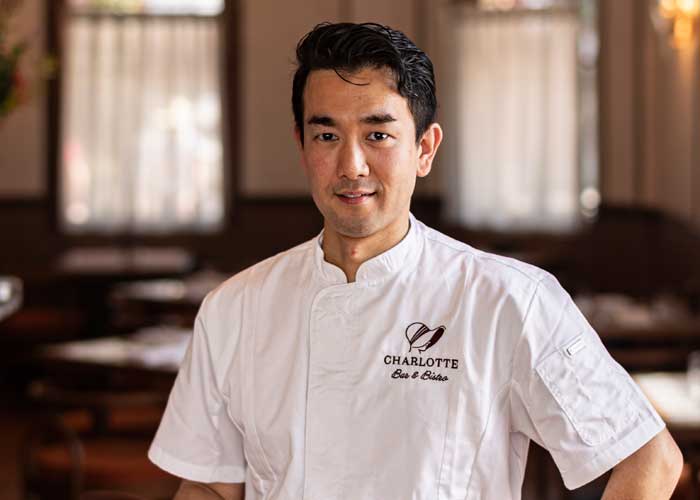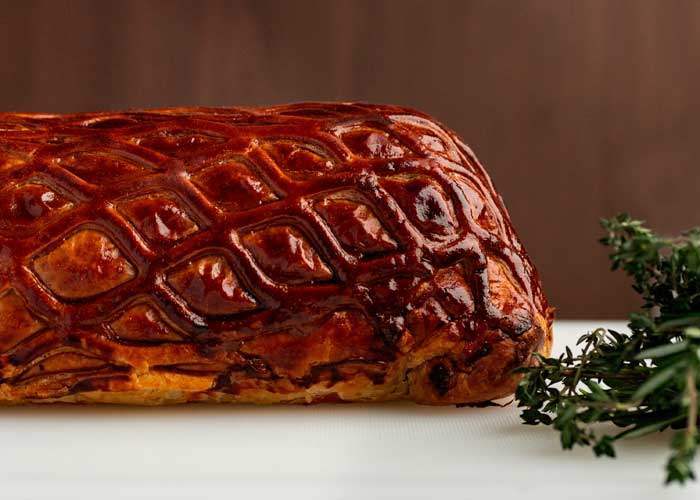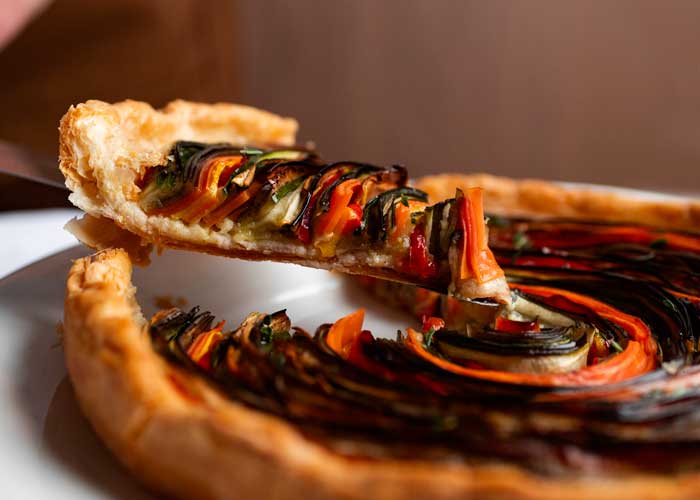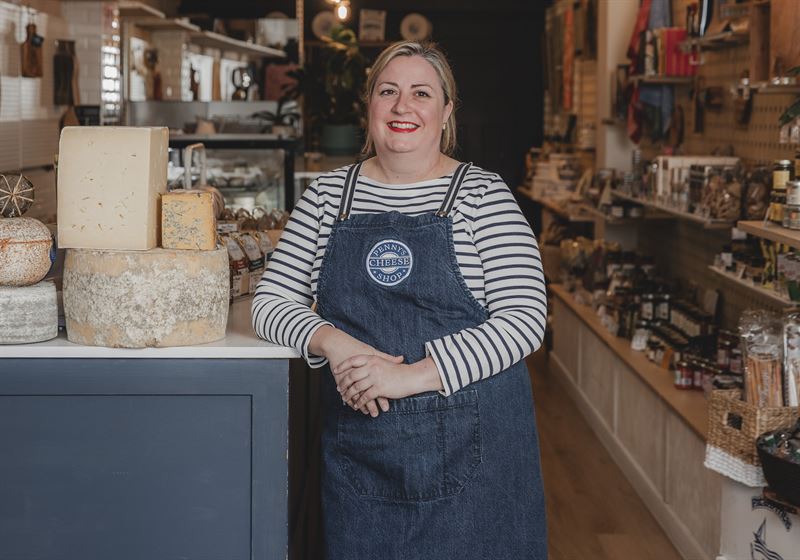By Marie-Antoinette Issa.
French food requires little introduction, serving as a staple on the Sydney dining scene for decades. From buzzing bistros to fine dining destinations dishing up fancier fare, the city is certainly not short of places that have perfected the art of plating up the iconic flavours of France.
However, hoping to offer a fresh take on traditional Parisian tastes is Chef Hiroshi Manaka, the king of the kitchen at the new McMahons Point restaurant, Charlotte Bar & Bistro. With a menu that combines the influence of his Chiba-born roots, Michelin-restaurant experience and the best epicurean offerings of the City of Love, Hiroshi hopes diners will also fall just as hard for his take on French fare fused with a touch of Japanese.
Here, he shares his take on fusing flavours, churros with foie gras and how he recreated frog legs…without actually using any frogs.

When did you first fall in love with food, how did you transform it into a career?
My Mum is a great cook and when I was young I enjoyed helping her with food preparations in the kitchen. She would always be hosting family and friends over to our house so I would also be watching and learning new things in the kitchen to help her.
When I was in primary school, our class teacher would ask: "What do you want to be when you grow up?” and my answer was always "I want to be a MasterChef.”
After I graduated from University, I was determined to pursue my passion for cooking and moved from Chiba to Tokyo by myself to find a job and train in restaurant kitchens. My first take was at a European restaurant in Tokyo where I worked for about 5 years before making the big move to Europe to hone my skills.
As for Charlotte Bar & Bistro, I originally had roots in Sydney working at LuMi Dining before moving back to Japan during COVID. So, when I received the invitation to come back to Sydney to open a French restaurant for the Azabu group, I felt the strong concept, together with their ethos of ‘Be Maro’ (a Japanese saying for leading with a sincere heart) really resonated with me so I was happy to come back.
How did your experience in European Michelin-starred restaurants influence your approach to running a French-focused restaurant in Sydney?
Michelin-star kitchens are very intense and run tight protocols, every dish is prepared with accuracy and with a specific Chef in the kitchen. Everyone has a designated role. The Chefs working in Michelin-starred kitchens usually are proud of their profession, have a lot of passion, and are very motivated.

This is the same energy I try to instil in our kitchen at Charlotte.
Even though Charlotte is positioned as a bistro with comfort and shareable food we still aim to keep the team arrangement (albeit on a smaller scale) very organised. Every section has a different category of dishes to prepare, so that everyone can concentrate on perfecting the product that they are in charge of.
Can you share some of the twists you have taken to elevate the traditional techniques and French flavours of Charlotte into something special?
Maybe it’s my Japanese roots of liking to focus on the attention to detail and the deconstruction of each taste. It is very rewarding to be able to match Australian ingredients with a mix of traditional French classics with a new modern twist. At Charlotte, we also discuss how we can create conveniences for our customers through the design of our dishes - such as the escargot gyozas which you can enjoy in one or two bites without having to pull it out of the shell or oil yourself.
While French fare is traditionally renowned for its richness, Aussie palates typically prefer something lighter. What do you do to achieve this balance of flavours?
When I came back to Sydney to prepare for the launch of Charlotte, I reconnected with prior suppliers I worked with in the past and also made new connections. This is one of my favourite processes as a Chef - getting reacquainted with the freshest Australian produce on a daily basis.
Good suppliers are all just as passionate about what they do and they bring a lot of new, different ingredients for me to experiment with, offering me lots of inspiration and sourcing opportunities to modify my dishes in search of authentic French tastes.

Classic French cuisine is actually heavier, so we are always finding ways to get a lighter balance to suit Australian customers.
In addition to this, we’ve had to get creative in instances where we are unable to source the exact ingredients available in France or greater Europe. In these instances, we try to bring our expertise and knowledge of authentic taste and cooking techniques to achieve a similar taste with Australian produce.
A great example would be the fricasse´e de co^tes de poulet. The dish idea originated from ‘Grenouille a` la Provenc¸al’ (frog legs). Since frogs are not readily available in Australia, nor is it a familiar cuisine for many, we decided to reinvent the experience using chicken ribs instead.
The fricasse´e de co^tes de poulet uses a housemade special seasoning and a French technique called ‘Meunie`re’ to tenderise the meat and make it juicy. The chicken is then slow-cooked with shallots, garlic, bujer and finished with fresh parsley. This is our take on the traditional French frog legs with chicken, while keeping this timeless garlic and parsley bujer sauce.
Being able to introduce interesting classics in a comfortable way for our customers is a very important point we discuss in our menu creation.
Are there any menu highlights you are personally proud of?
Amuse-Bouche (our snack menu section) means ‘mouth amuser’ and refers to bite-size appetisers. My favourites among these are the churro au foie gras (churros with foie gras) and gyoza d’escargot au vin rouge (escargot gyozas).
Our main highlight is the signature bouef en-crou^te royal. We use three key ingredients: duck, beef and foie gras. What is unique about this dish is that these three main ingredients all use different temperatures to cook and we’ve found the perfect balance to complete this dish. Soy skin is also used to lighten the taste and also to retain the juice of the bite.
Besides the food, a big sweet highlight for us is the dessert menu. Tarte aux praline is inspired by tarte Lyonnaise which uses ground almonds and stands out with a beautiful rich pink colour. Charlotte’s twist on this French classic is pecan nuts, offering a lighter yet aromatic taste and balance.
Which Chefs have inspired your culinary journey, and how have they influenced your cooking style?
David Toutain for his wisdom and creativity, thinking outside the box and pushing the limits when it comes to his creations. His commitment to the use of seasonal ingredients and bringing out the flavours with a contemporary twist is very much respected. I think as a Chef, it is always important to have a deep understanding of the ingredients that you are working with.
Finally, what do you hope diners take away from their meal at Charlotte?
As a team, whether it is front-of-house or in the kitchen, united we hope our menu and service translates to happiness, comfort and creating lasting memories. As mentioned, one of our main ethos is the saying to ‘Be Maro’ short for Magokoro (hospitality with a sincere heart). We hope our customers can feel cared for when they come in through the doors and enjoy the original dishes that we have created.









